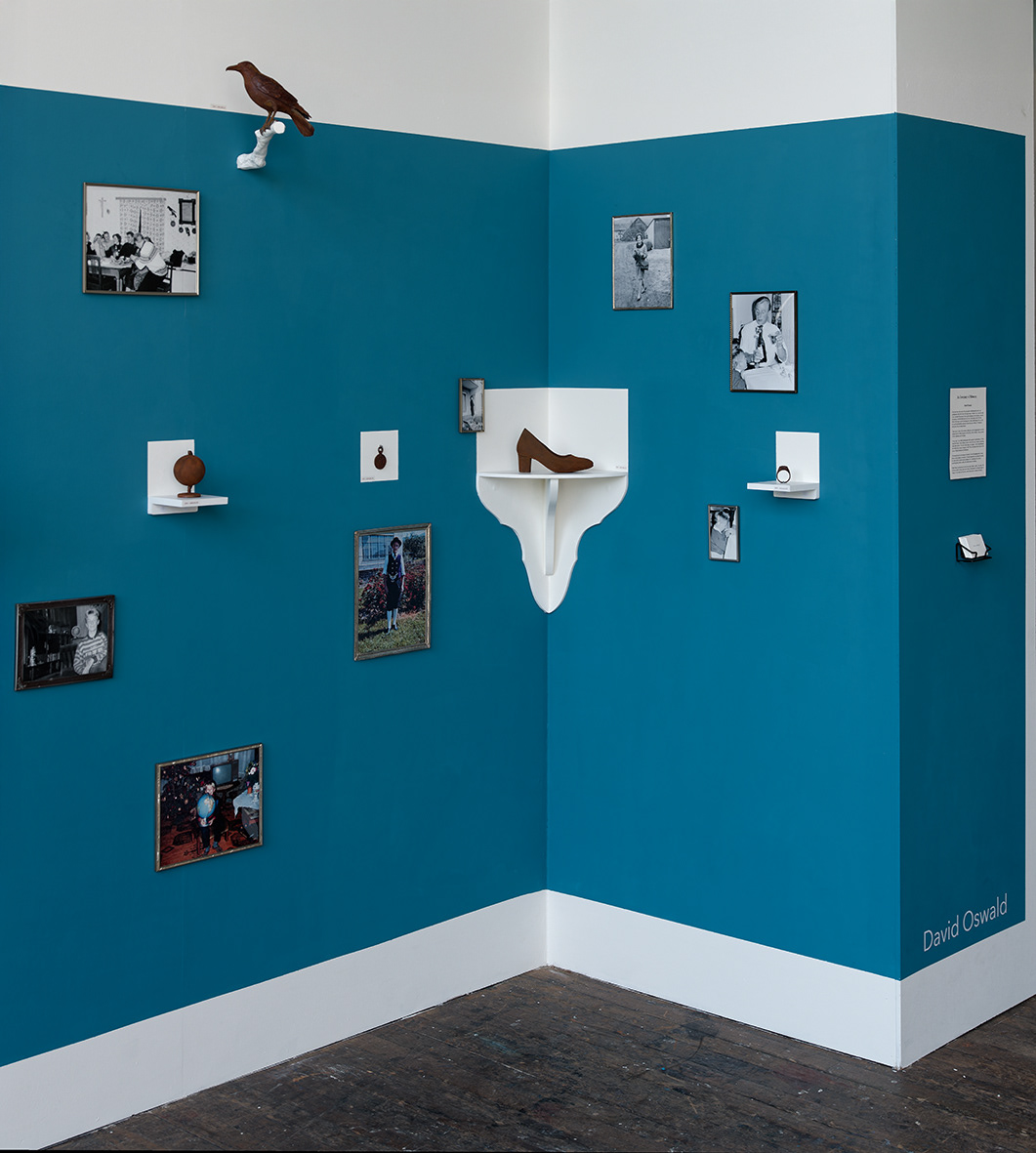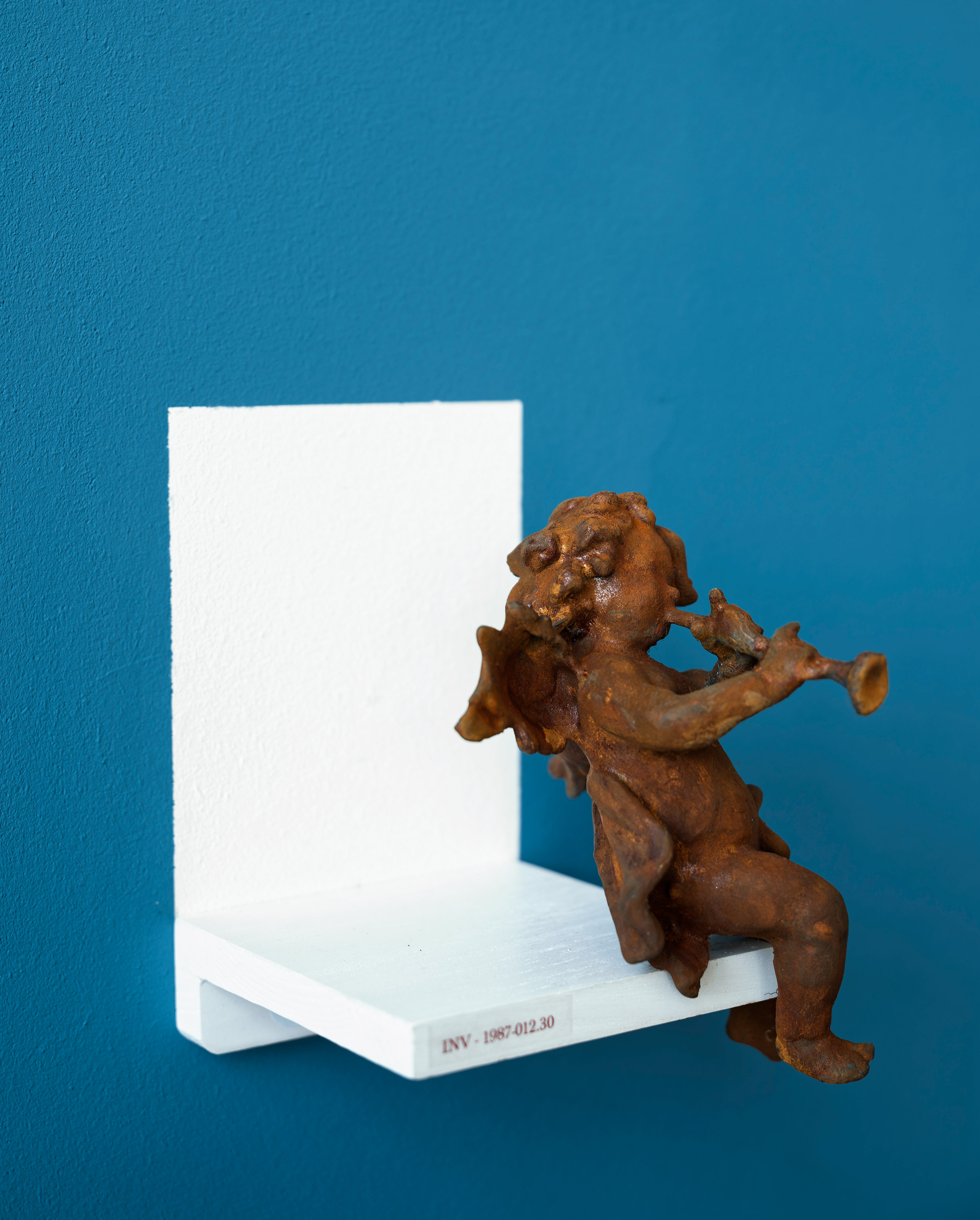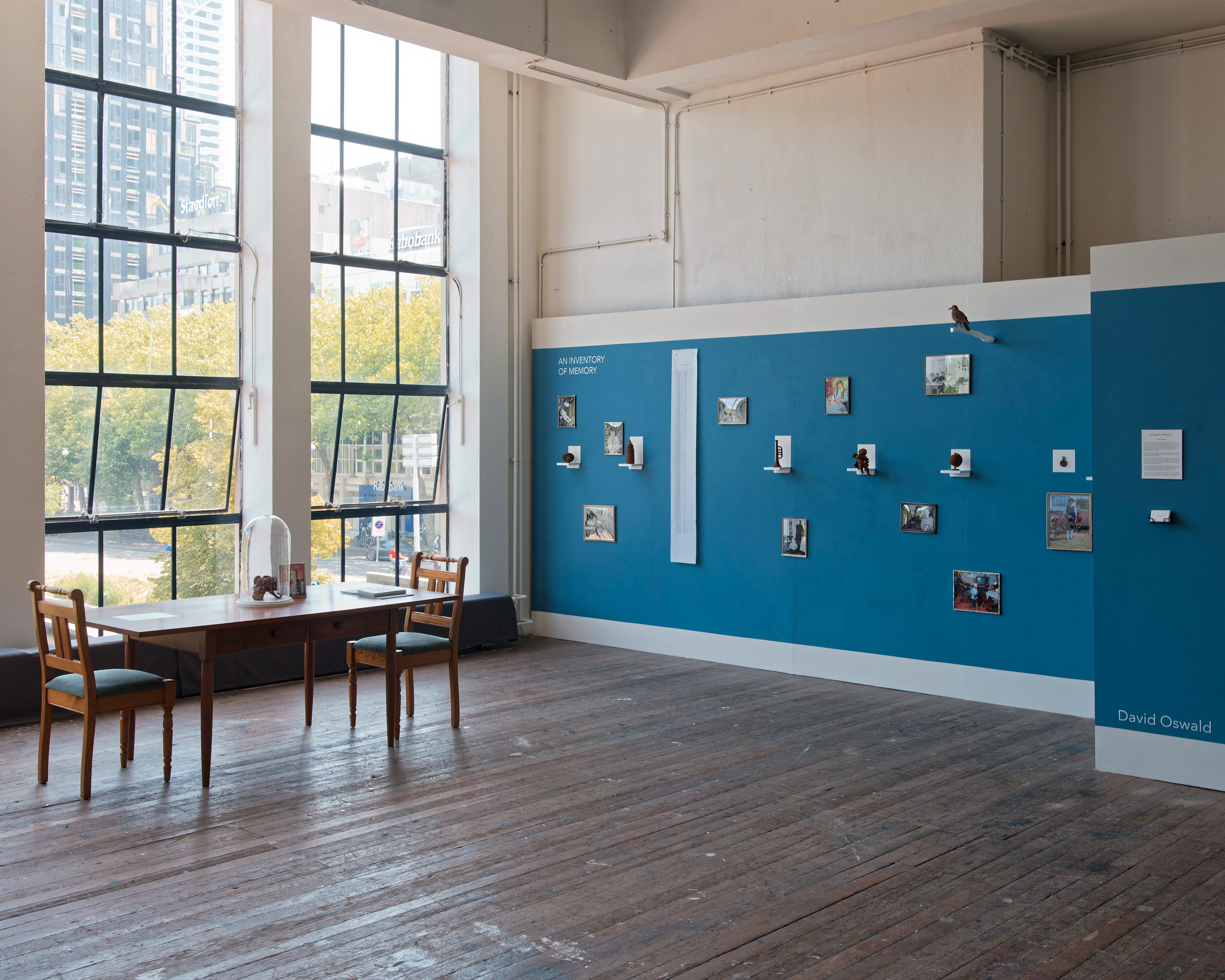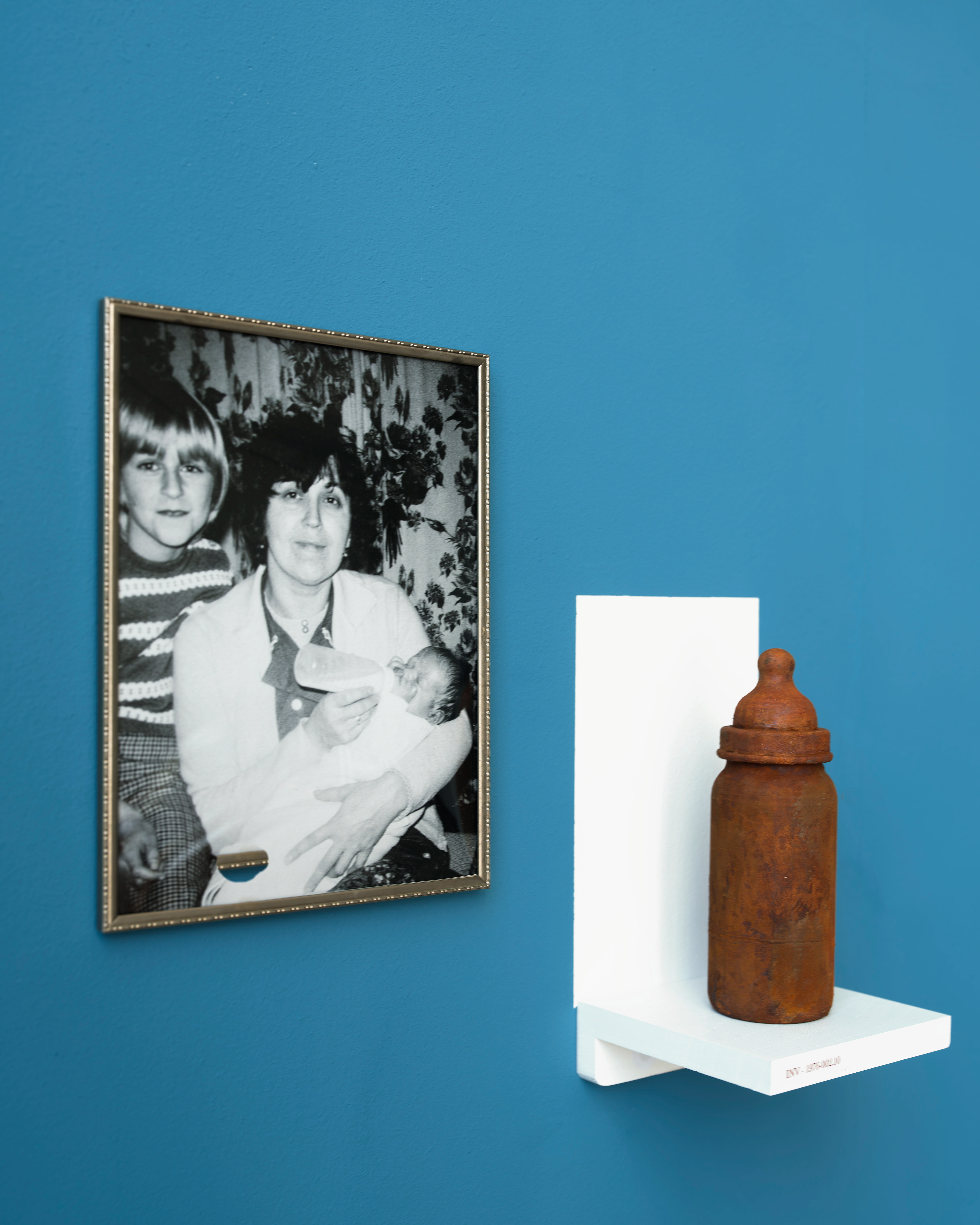2025
Over more than sixty years of living together in the house they built, my grandparents filled their home with many things: children’s toys from the early years, souvenirs from distant travels, gifts exchanged across decades, seasonal decorations returned to their place each year. Every object settled into the fabric of the house—quietly absorbing time, touch, and meaning. Now, as my 87-year-old grandmother prepares to leave this space behind, I’ve begun to look more closely at what remains.
These objects, dense with presence, often fade into the background—yet their surfaces bear the subtle imprints of daily life. In their stillness, I see a portrait of care, repetition, and belonging.
In my work, I pair family photographs with sculptural reproductions of these household items. These objects, treated to rust over time, become something more than replicas. The rust evokes decay and ageing—a slow transformation that mirrors the erosion of memory itself. Once functional, these objects now serve as fragile monuments to lived time.
The house becomes an inventory of memory—not in the administrative sense, but as a quiet system of resonance. Through juxtaposition and material tension, the work reflects on how memory endures not as something fixed, but as something that oxidizes, shifts, and settles into new meaning.
Rather than reconstructing the past, the project opens a space—for pause, for reflection, and for sitting with what remains. It honours the emotional weight of things we once held, and that now, in their altered state, continue to hold us.



